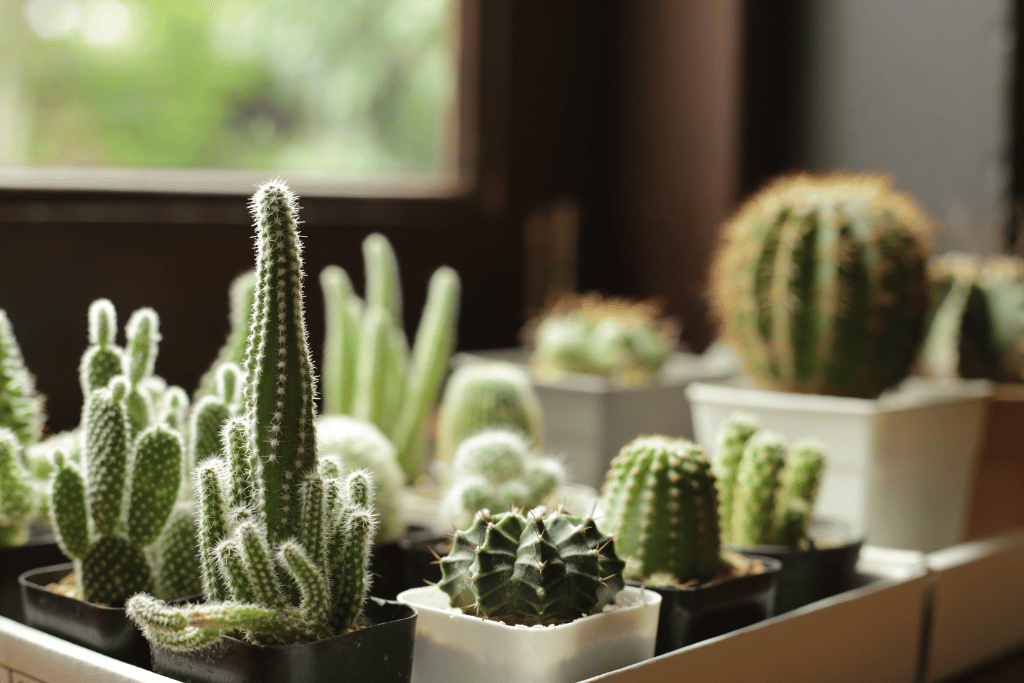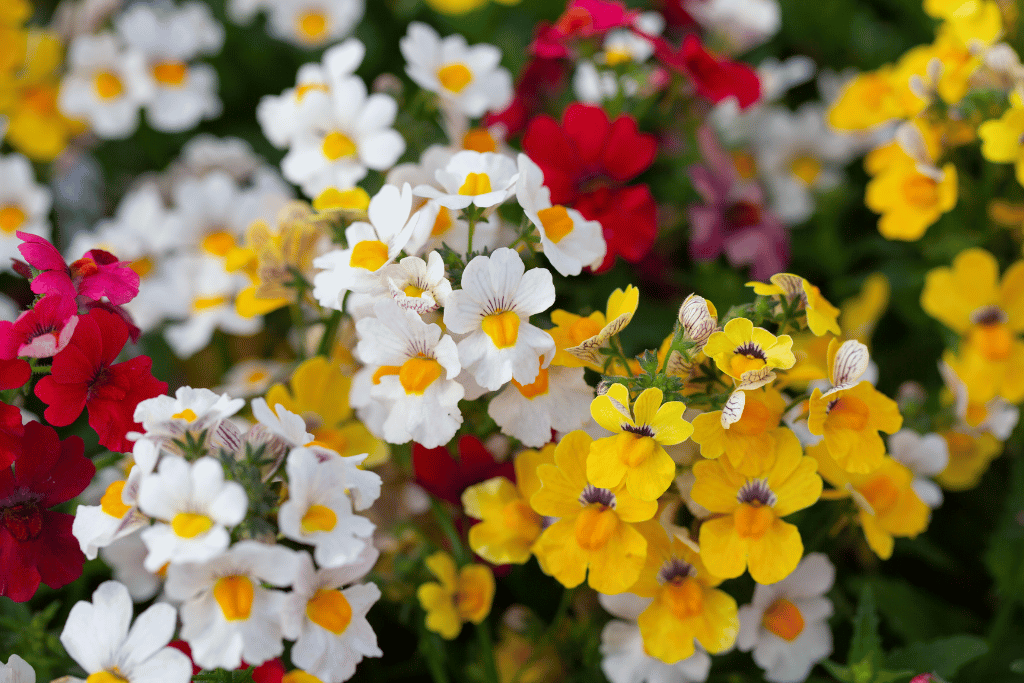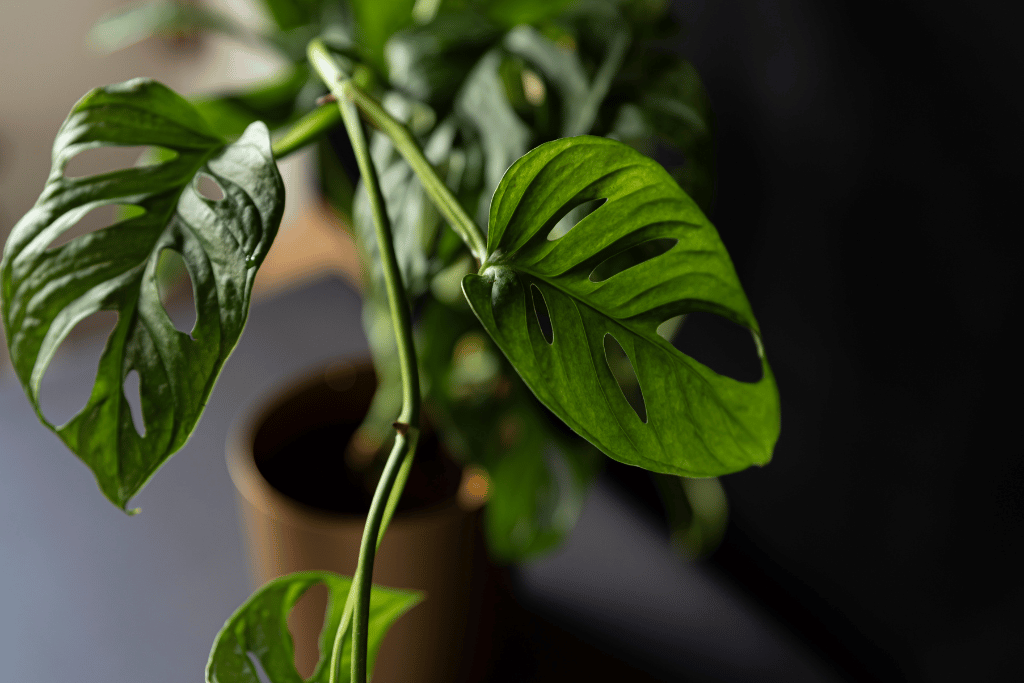
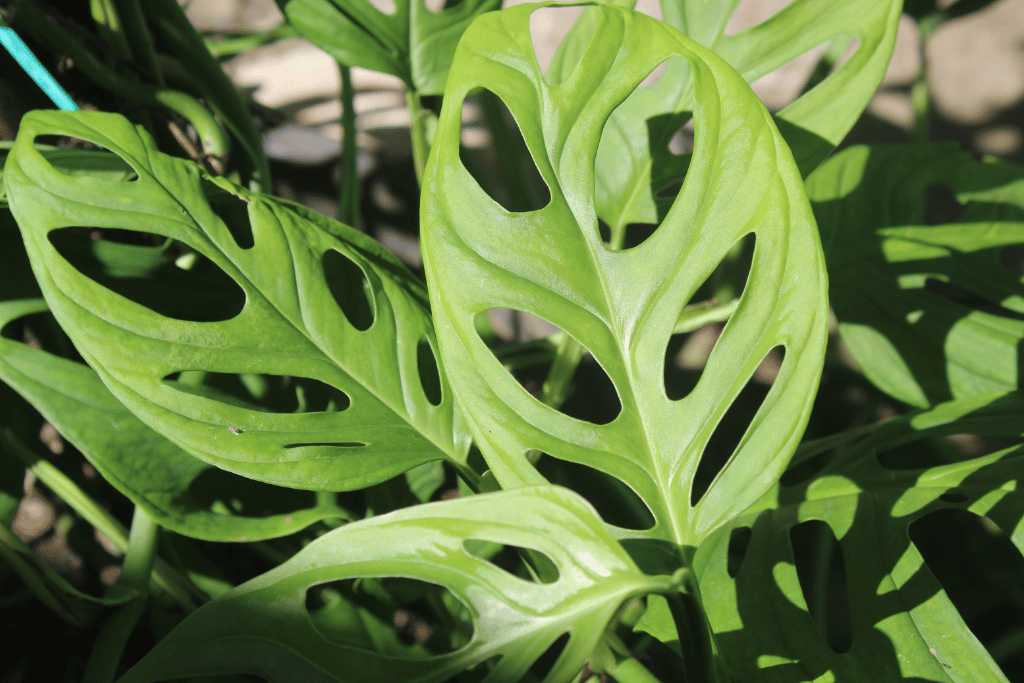
I’m no stranger to tending a variety of plants, yet Monsteras remain my favorite. They start with a few leaves and grow into this piece of beauty in such less time. This article is about the two Monstera species that are very close to my heart.
It dates back to a year when I was in a dilemma of choosing between Monstera Obliqua vs Adansonii. Both varieties are part of the same species, but they have a few differences that make each unique.
My Story
Getting My Hands On Both Species
So, I was at this local plant nursery. Strolling through the botanical garden, I was captivated by a breathtaking Monstera obliqua. Its intricate leaves were like a delicate lace dress with millions of tiny holes patterned across them. Immediately drawn to its beauty and originality, I knew at once that it had to come home with me.
A few weeks later, while scrolling Instagram, a Monstera adansonii immediately came before me and stole my heart right away. Its lush leaves were in the shape of hearts and its signature holes more distinct than those of the Obliqua variety. My desire for this beauty was irresistible so I placed an order right away and waited with anticipation for it to arrive!
Comparing The Looks – Monstera Obliqua vs Monstera Adansonii

Excitement filled me as I eagerly unpacked the two Monstera species side by side. When I did, their differences were immediately visible – the Obliqua was dainty and almost magical while the Adansonii radiated a boldness that flaunted strength.
As I put them together, it was clear to me that they signified two sides of a single coin – beauty and strength, delicacy and resilience.
The Obliqua looked like a delicate glass figure while the Adansonii stood tall, seemingly primed to confront any obstacle that came its way. It was as though they were competing for attention and approval—each attempting to outshine the other with their beauty and strength.
The Sad Fate of my Monstera Obliqua
I stayed by their side as they flourished, each one adding its own unique charisma to my home. But then came a change with the Obliqua; its leaves started wilting and beauty declined. No matter how hard I tried, nothing worked – watching it slowly die, broke my heart.
Who’s Fault?
Was Adansonii at fault for the demise of Obliqua? Or, was it their environment or poor attention that caused her death? Could both species peacefully share in the same habitat without having to clash with one another? I was confused!
What I Learned?
As I grieved the passing of my adored Obliqua, another tragedy followed. The Adansonii began to weaken; its leaves began to look strange as if they were slowly losing their vitality. It seemed as if the Adansonii knew that even with all its power, it was nothing without the gracefulness of the Obliqua.
My first impression after what transpired: Both the plants were complementing each other’s uniqueness and creating a harmony of their own. The clash between the Obliqua and Adansonii was one of balance, not rivalry.
But of course, I was wrong and naive lol. It had nothing to do with that! I came to know that I wasn’t providing proper care to both the plants!
So, catering to the requirements of both the species is what’s important! I once again bought the same plants and grew them – this time, with proper care. And guess what, they thrived!
I’ll be explaining their requirements, characteristics and factors that affect their growth. So, stay tuned!
Monstera Obliqua Vs Adansonii – The Differences
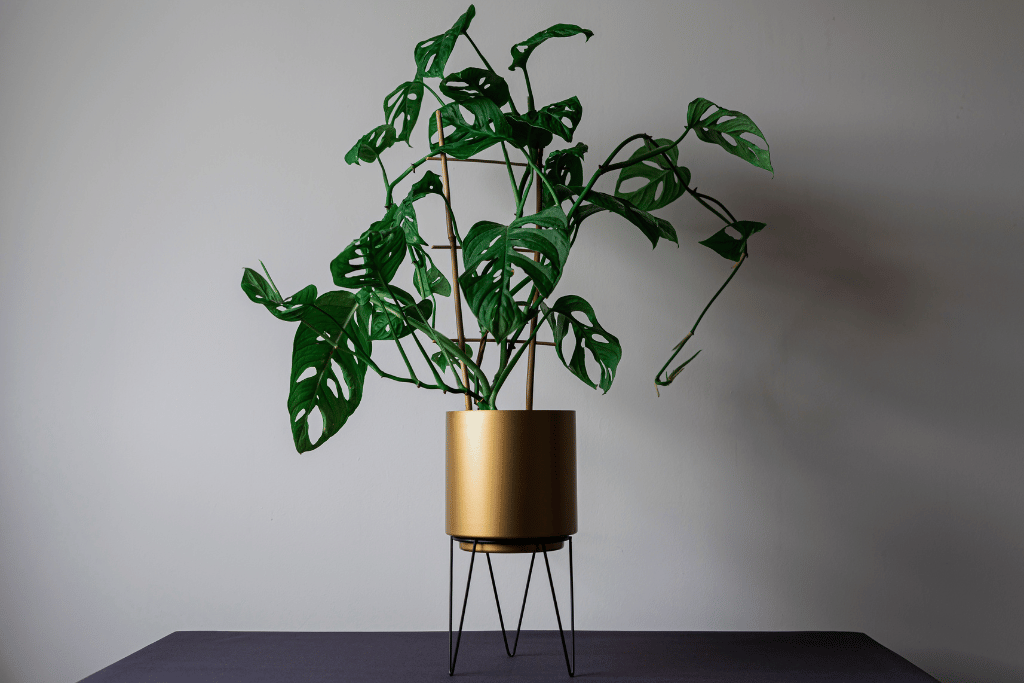
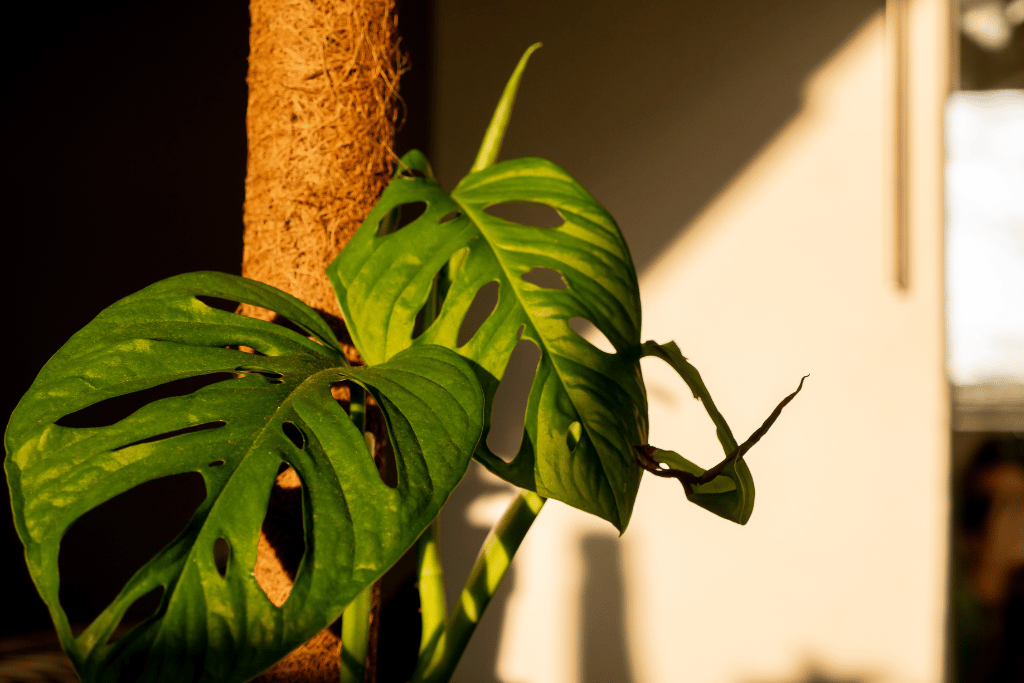
Monstera plants have seen massive success recently due to their unique foliage and trailing habit. As two of the most in-demand species, Monstera obliqua and Monstera adansonii are regularly confused with one another – however they possess several key differences that make them stand out!
So, let’s dive in and learn about their leaf structure, growth pattern, habitat and distribution, and care requirements.
1. Leaf Structure
Identifying the differences between Monstera obliqua and Monstera adansonii is effortless once you become aware of their unique leaf structures.
Monstera Obliqua
Monstera obliqua stands apart from its relative, the Monstera adansonii, with smaller leaves measuring 25 cm- 9 inches in length. These heart shaped beauties are distinguished by their thin and papery texture and irregularly spaced “fenestrations” that start at the leaf’s center and spread out.
The holes are far more spread out than Adansonii, which gives a mesmerizing look to this tropical plant.
Monstera Adansonii
Monstera adansonii leaves are considerably bigger than their counterpart, the Monstera obliqua; they can measure up to 30 inches in length. Not only do these heart-shaped beauties have more pointed edges but also an exceptionally thicker and leathery texture. It is however their perforations that make them truly distinctive – smaller and much closer together compared with those of the Obliquas’, often found around its leaf’s edge for a unique look!
2. Growth Pattern
Monstera obliqua and Monstera adansonii may both be vining plants, but they each possess unique features that set them apart. Comparing their growth patterns can help distinguish between the two varieties.
Monstera Obliqua
If you want a plant with an airy and light foliage, then Monstera obliqua is the perfect option for you! It has been known to reach upwards in pursuit of more sunlight, making it ideal for hanging baskets or as trellises. Although its growth rate may be slower compared to other monsteras including Adansonii, this vine will add beauty and gracefulness wherever placed.
Monstera Adansonii
Unlike Monstera obliqua, the Monstera adansonii has an even fuller foliage pattern as its leaves grow closer together on the vine. This beautiful plant loves to trail or climb along surfaces and will look great trained up a trellis, cascading from a hanging basket – anywhere you please!
3. Habitat and Distribution
Monstera Obliqua and Monstera Adansonii, both native to Central and South America, thrive best in the humid conditions of tropical rainforests.
Monstera Obliqua
Rare and endangered in the wild, Monstera obliqua is facing a serious threat from habitat loss and illegal collecting. Usually found on forest floors, this species has adapted to its environment by developing sparse foliage patterns that enable it to get enough light even under dense canopy cover.
Monstera Adansonii
Monstera adansonii is strikingly prevalent in the wild and can be seen flourishing on trees, rocks, and other surfaces. Its distinctive foliage pattern helps shield it from strong sunlight so that it may thrive even in brighter surroundings.
4. Care Requirements
Light Requirements:
Finding the right balance of light is crucial for Monstera obliqua and adansonii plants. Too much sunlight can cause sunburn, while too little will leave them looking pale. So, stick with bright but indirect lighting so you don’t have to worry about your Monsteras resembling any overly-tanned vacationers.
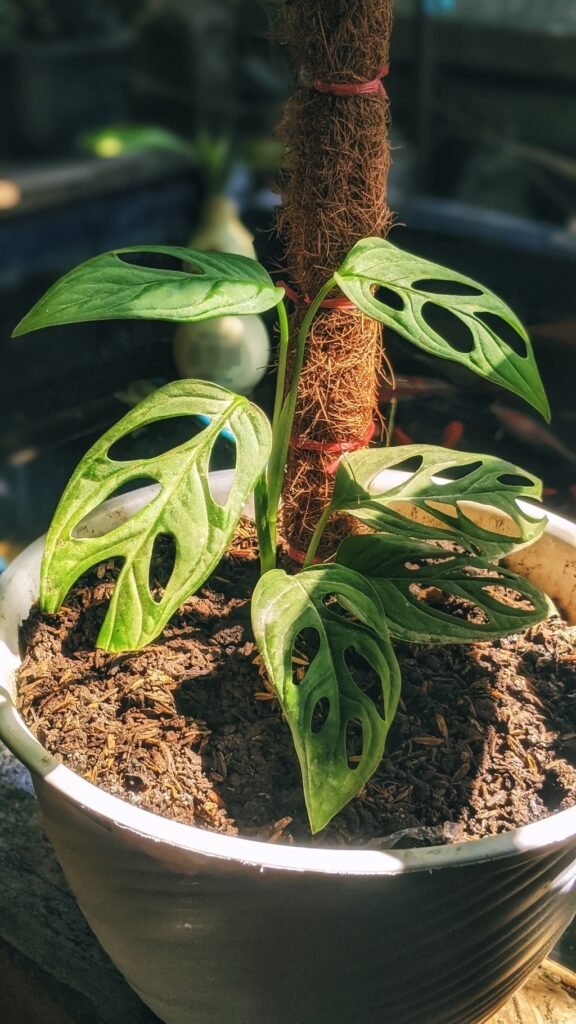
Watering:
The Monstera obliqua and Monstera adansonii plants need constant watering to stay happy. It’s a bit like finding balance within any relationship – give them enough water to thrive, but not so much that they become dependent on you. Therefore, one watering every 2 weeks should be sufficient for these voracious plants!
Humidity:
Providing the perfect level of humidity for Monstera obliqua and Monstera adansonii is a tricky task, just like trying to keep your hair straight in humid weather; you’ll need to be vigilant. Aim for at least 60-80% humidity if you want them living their best lives – any lower than that is tantamount to an arid desert! Go with misting or get a humidifier as part of your care regimen so they can thrive.
Soil Requirements:
Monstera obliqua and Monstera adansonii prefer a well-drained soil mix that is both light and breathable. A delectable blend of peat moss, perlite, and potting soil will keep these beauties content in their new homes.
Read about best soil for Monstera.
Fertilization:
Providing your Monstera plants with a nutritious fertilizer, akin to serving them a well-rounded meal, every four to six weeks will help keep them looking their finest.
Temperature:
When it comes to Monstera obliqua and Monstera adansonii, the perfect temperature is just like trying to find that sweet spot in your office – too warm and you’ll be drenched with sweat, yet too cold will leave you trembling. To keep them happy, ensure their habitat runs around 60-80°F while also avoiding any sudden changes in climate.
Pruning:
Both plants appreciate a bit of pruning, much like getting a new hairdo. Monstera adansonii can withstand more drastic pruning than the sensitive Monstera obliqua; so use care when removing any dead or yellowing leaves to boost its branching growth.
Propagation:
To propagate Monstera obliqua and adansonii, you can use a familiar method: stem cuttings or air layering, almost like trying to clone your little plant! All that’s required is snipping off a stem with at least one node and placing it in water for 2-3 weeks. Be patient as the roots start developing during this time.
Comparing Rare Species of Monsteras
Monstera adansonii vs obliqua vs hybrid
Among plant lovers, the Monstera adansonii stands out for its low-maintenance upkeep and attractive leaves. These intricate foliage boast a special pattern that makes them highly adored among collectors who will do anything to obtain rare specimens.
On the other hand, The Monstera obliqua is a true treasure of the plant world, possessing distinct perforations and slender leaves. Its extraordinary look has made it one of the rarest plants for collectors to own; some are willing to shell out a huge price just for a single cutting!
And then there’s the hybrid, a cross between the two beloved plants. The hybrid has quickly become a fan-favorite, with some saying that it is more gorgeous and easier to take care of than the parent plants. Its varied characteristics are undoubtedly part of its charm!
The hybrid plant’s look can differ according to the exact cross, but generally, it displays a blend of Adansonii’s delicate detailed foliage and Obliqua’s thin perforated leaves. Its sizable leaves possess the signature fenestrations of an Obliqua as well as the attractive patterns of an Adansonii – making for one captivating look!
The hybrid’s exclusivity is a significant benefit in itself. By combining two rare plants, the hybrid has become even more demanding and less frequently found than its parent species. Its scarcity makes it highly coveted in the plant world.
Monstera Obliqua Leichtlinii Vs Adansonii
The Monstera obliqua Leichtlinii and the Monstera adansonii represent two extremes in terms of rarity. Ranked as one of the rarest houseplants on earth, the former is highly sought-after due to its unique foliage: elongated leaves with evenly spaced perforations. It is also expensive since it can be tough to find. Plant collectors around the globe go wild for this magnificent specimen.
In contrast, the Monstera adansonii is a widely available houseplant and found in many plant nurseries and garden centers easily. It is far less scarce than its counterpart – the Monstera Obliqua Leichtlinii.


